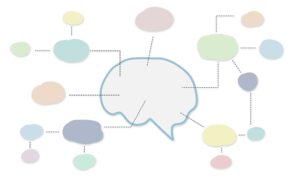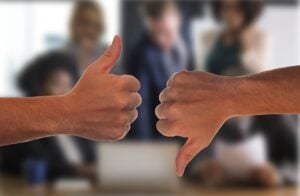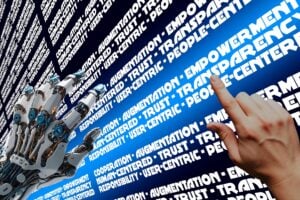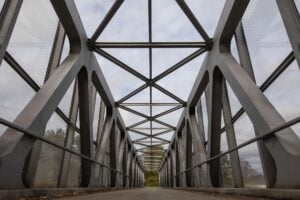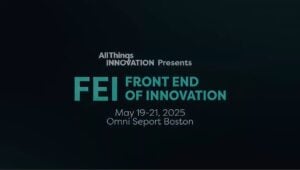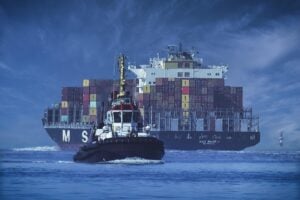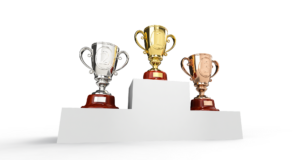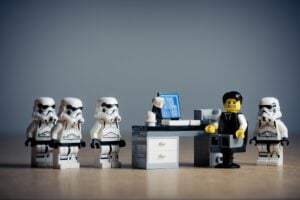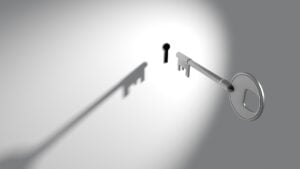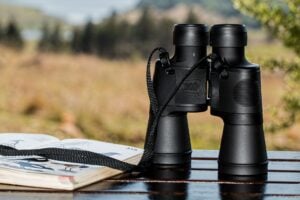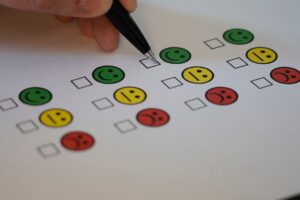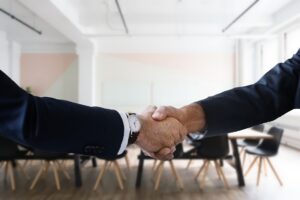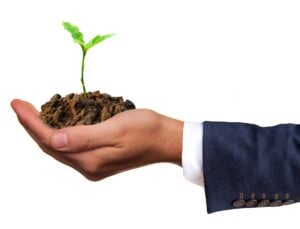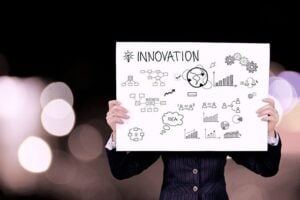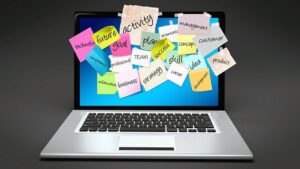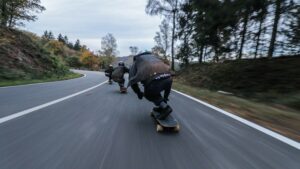Rohrbeck literally wrote the textbook on corporate foresight. Just this past year, he conducted a global benchmarking study focused on institutionalizing strategic foresights. The FEI25 community committee gathered around a virtual roundtable to ask diverse questions about how organizations can action and gain true value from corporate foresights.
Adapting to Uncertainty
Su-Feng Kuo: What is it about corporate foresight that is so tough to implement?
Rene Rohrbeck: When we first looked at this, we were in an industry which wasn’t a particular situation which needed to reinvent itself. My research started when I was in telecommunications, which is hardly known as telecommunications anymore because it is something else. It is connectivity. It is IT. It is AI. So we were at a particular spot, saying, how can we reinvent our position in the value chain, our business model? And then you realize that if you want to have a conversation with other organizations, which is what we did, we went into a lot of benchmarking, but there were not so many out there who said, yes, that happened to us last year as well.
Now one can call it foresight, but it’s probably not foresight on my side. It just happens to be the case that now we find more and more companies which find themselves in the position that they deeply need to reinvent themselves. Where does innovation lead us? What is the strategic angle to it? How can we bring a joint narrative for our organization into existence, which guides us towards a new type of innovation, a new type of economy, etc. For us, it was at the start, something which we needed, and we were looking for guidance. We built a maturity model and then bit by bit, we built a consultancy practice around it. We built a curriculum about it, and now we are probably among those voices who can help you institutionalize this corporate foresight muscle in your organization.
The Art of Foresight
Kuo: In Rene’s first book, he reviewed a few cases and talks about why companies didn’t really take the opportunities at that time to innovate. That really struck me. People are not comfortable with change. They are more comfortable to do what they are doing right now. So how can we make people aware of the importance to see the opportunities for growth and how they change that mindset? How can we help them start the first step and feel supported or comfortable with that uncertainty?
Rohrbeck: It’s often also a kind of scapegoat debate, where, middle management would be saying, but we don’t have the top management support. Top management is saying, well, I better look outside because my middle management is really not bringing up new things. We need to create this catalytic moment. And, how that often happens is by a program which we announce, OK, we want to understand what’s the next generation intel. What’s the next generation of our company?
We want people to get involved. So this catalytic moment can come from a larger program. It can also come from joint foresight. We’ve been recently working with a big chemical company over 500 years of age, which said, our industry is changing so dramatically, and also how is our workforce thinking about the future of our company. We need to bring them together. What we did is actually, a big scenario program, which started in the middle, went to the top, and then cascaded down the organization to focus people around joint narratives. It’s really this capacity to build narratives which bring together many people, which invite many people to contribute, and then also to execute on new strategy, which is the core, if not sort of the heart of the craft, the design, and the art of foresight.
Catching the Right Wave
Kuo: I feel like my company and my team are going through that transformation. Because the environment is changing so dramatically, and now we have a new strategy, for growth to 2030. But I think the company has done a lot of communication on where we are going. But I feel like it really takes a village, and it takes so much time. Do you have any strategy to make sure that people have changed their mindset, they really put the best into their work? Because I feel like from time to time, you still hear the doubt, is this really where we’re going? How do you deal with that?
Rohrbeck: I think most companies, they realize that we’re also in a change from an old era to a new era. I often compare it to sport because I like to do a lot of different sports, and I’m getting quite excited about new sports all the time. When I was young, I was rowing, and I liked rowing. This sense of being on the team, in the boat with eight people, we’re all rowing and maybe we’re a bit faster than the others, then it’s really good. If you’re a bit slower, then it’s less good. But you know what you do. You are in a boat. You’re often with very sophisticated equipment, and you’re feeling in sync with everyone else. You know that everyone has been training for this.
Years later, I got into surfing, which is a total mess. You might be pedaling out there and every wave hits you and you’re not having a good time. I think what’s what we see in many companies today is this realization that while we need to spend 80% of our time to still be able to row and basically row faster than the other rowing boats, which have exactly the same boat and also motivated people who know what they’re doing.
But we’re starting to be in a situation where it’s maybe 20% that we need to get into surfing. We need to understand when will the next waves come? What are the patterns in this industry? What are the sets in which a surfer knows a different pattern of waves which are coming in? Then you need to be getting ready. You need to acquire new capabilities before other companies. And then this happens all in a moment. There comes this moment where you realize, if I’m now waiting to see that the market is either developing or not developing, then it will develop without me. So there’s this moment where you need to go all in.
Foresight as Your Superpower
Kara Cunzeman: I often see as a foresight practitioner, the word foresight, strategic foresight, people get scared. There are actually studies done on people that don’t like the word strategy, and we have two scary words. So maybe step back and just in the simplest form, kind of describe what strategic foresight means to you, and then make the case to the innovators in the room. Why is it so essential that we tie those? I’d also love to hear your take on how you communicate this to non-foresight practitioners.
Rohrbeck: I think the general idea people need to get is that you want to go where the ball will be played next. Think of Wayne Gretzky, the ice hockey player. You would often see him skating off to a different part of the field where the puck was not, visibly, and you were wondering if he wants to have a break or if he wants to grab a coffee. But he kind of saw the pattern happening. He was understanding, where will this move?
It was often periods of 30 years where things are pretty stable in an industry until drastic changes happen. As foresight experts, we also know the K-waves, which have been kind of mapped out in 50, 60-year patterns. In a way you could get this feeling that as an organization, maybe I need foresight only every 30 years. That is, however, right now probably not true for any industry because AI is changing fundamentally how we think about intelligence, employability, how we make decisions, how we plan, how we innovate, and so on. This notion of having to take one or maybe even two steps back and look at how is this evolving? What is the end game in this? What happens if we add more and more compute? What can we do in innovation, which we couldn’t do before with a bunch of motivated people from different backgrounds. This is where foresight suddenly opens a new universe.
I should have told you this at the start, but warning, you’ve been infested with the foresight virus, and it will never leave your body again. Because you suddenly look at the world differently. You think in systems. You think about how things will evolve in the mid and long term. And that also means that you’re not satisfied anymore by just fixing something in the short term.
But it also gives you this kind of superpower. It’s ultimately a set of tools and techniques on how to think differently, how to think in systems, and to map out with yourself and with others an exciting path forward. That’s what everyone who has sort of been in touch with this, ten years later, they will tell you, this changed sort of my perception on what I was doing before in innovation.
Editor’s Note: Click here to view the full video of the conversation between the innovation community and Professor Rohrbeck, where they discuss topics such as AI, foresight tools and how to measure success. The video begins with a short session on “Aligning Innovation Business Strategy,” featuring Mike Hatrick, Vice President IP Strategy & Portfolio, Volvo Group; and concludes with a question-and-answer session.
Contributor
-

Matthew Kramer is the Digital Editor for All Things Insights & All Things Innovation. He has over 20 years of experience working in publishing and media companies, on a variety of business-to-business publications, websites and trade shows.
View all posts








